Another Lend-Lease. Light multipurpose armored personnel carrier M3А1 "Scout Car"
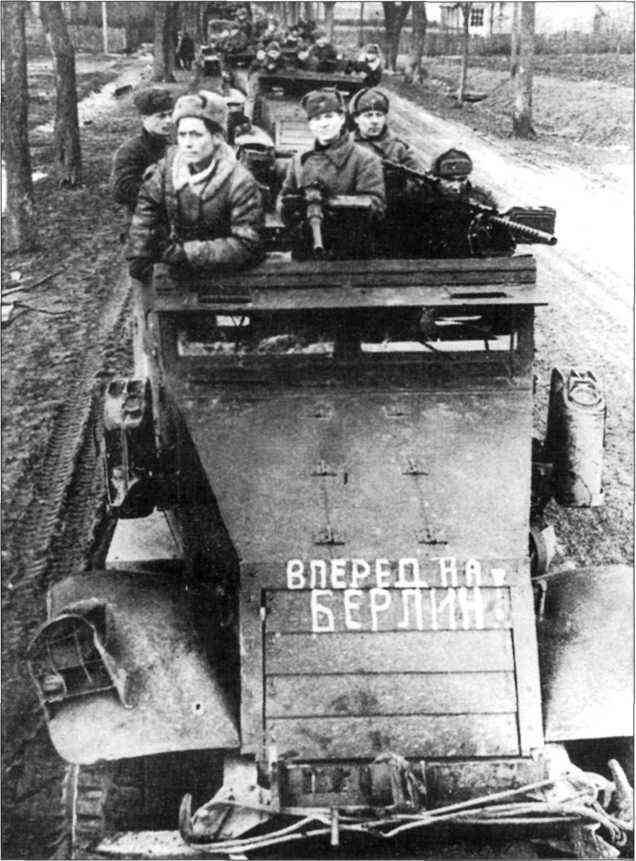
Our hero, as was the case with many "Americans" of that period, was indeed a novelty for the USSR. Even during the Patriotic War, when military equipment appeared at our enterprises in record time, nothing of the kind was created.
The reason for such disregard for the creation of such equipment in the USSR was not only the standard lag of Soviet industry from the US industry, but also the sufficient saturation of the corresponding parts with machines of other classes. But with the same tasks.
So, today we will talk about the light multipurpose armored personnel carrier МХNUMXА3 Scout Car (reconnaissance vehicle). The one that still raises questions for the majority of museum visitors with its buffer rotating drum mounted in front of the hull. By the way, this drum later became the "chip" of most US armored vehicles of that period.
It should not start with the design and stories creation, and from the reasons for the emergence of the very idea of creating such machines.
30-40-s 20 centuries are characterized by the rapid development of armored vehicles in all the leading armies of the world. The motor age dictated its conditions for a future war. Their speeds and their solutions for a variety of units, including intelligence.
Most designers from different countries have taken the path of creating lightweight tanks and armored reconnaissance vehicles. In principle, the decision was logical. Light, high-speed tanks or armored cars really could serve as the vanguard of tank units and formations. And the presence of light armor protected the crew from enemy bullets and fragments. Plus, the mobility of the scout allowed him, in which case, simply to break contact with the enemy that suddenly appeared, that is, in other words, to wash off.
At first glance, small armored vehicles and light tanks were fully consistent with the military tasks assigned to them. But it is at first glance. In fact, in the work of these machines was a significant drawback. It is in the intelligence part.
The size of these scouts significantly reduced the number of crew members. Moreover, each crew member had his own duties. When getting into a combat situation, the crew was not so much engaged in reconnaissance as it was fighting with the enemy.
And the second drawback. Already more specific. When conducting reconnaissance positions of the enemy, in most cases, the machine must be left at some distance from the enemy. A direct observation should lead a scout on foot.
This is where the dog is buried. The crew during the conduct of intelligence has no right to leave the car! The commander of the reconnaissance unit is simply forced to either violate the procedure established by the charter and deprive the crew of the crew member of the vehicle necessary to conduct the battle, or conduct reconnaissance in force, causing fire on himself.
In other cases, intelligence results were more than questionable. At the level of "unverified data." And the battle itself on poorly protected machines was more than a dubious event. The armored vehicle was easily amazed not only by artillery, but also by large-caliber machine guns.
It follows that an armored vehicle for reconnaissance units should be used not so much as a combat vehicle, but as a vehicle for the delivery and evacuation of intelligence officers. But, at the same time, she should be well-armed enough to support the departure of the group in the event of its detection.
The first to come to such conclusions were the Americans. It was the American military that, back in 30, they started talking about the creation of an armored personnel carrier. At the beginning of 30-ies, the US military department formulated quite stringent requirements for such machines. Then the name of scout vehicles (Scout) appeared.
Subsequently, during the operation of these conveyors, this name is most often used when they are indicated in official documents. The alphanumeric index of the US Army was almost never used.
How were the first armored reconnaissance vehicles built in the USA?
The first such car, traditionally for the United States, is based on the commercial white lorry white indiana 4x4. Call this first armored car armored personnel carrier was difficult. More precisely, a full-fledged armored personnel carrier. Created by White Motor Corporation in 1933, the prototype received the designation T7. And subsequently, the army designation M1.
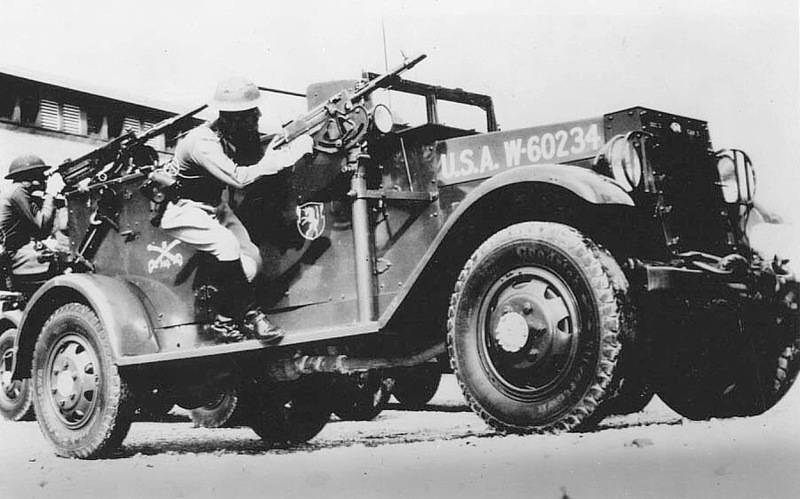
The M1 was equipped with the Hercules I carburetor 6-cylinder engine with a displacement of 4,6 l and a power of 75 hp. The top-opened body of the car had 12,7-mm frontal, 7,62-mm fodder and 6,35-mm side armor, providing protection from bullets and small pieces of shells.
The reconnaissance armament was very powerful: two 12,7-mm large-caliber Brawning M2 machine guns in front of the hull and two 7,62-mm Brawning M1919-X4 on its sides.
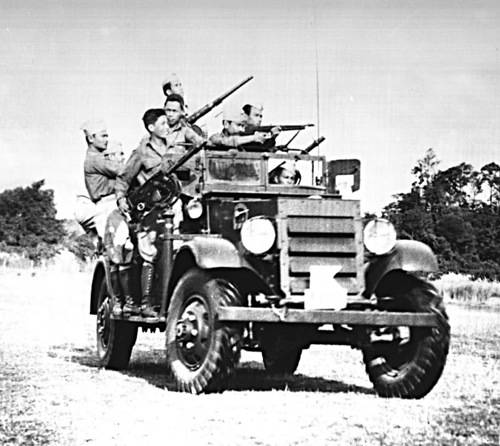
Alas, after testing at the test site, it was decided to release only 76 of such vehicles to arm two armored cavalry battalions in Fort Knox (Kentucky). The history of the Scout Car M1 is over.
But the success of М1 inspired other companies to create "scouts". Moreover, the designers went again in the traditional way.
Already in 1935, another prototype was created - the T9. And it was created by a competitor firm Corbitt & Co. The fate of this prototype was exactly the same as that of the M1. Limited edition and ... oblivion. But some important changes that were later included in the next version should be noted.
As a base, the chassis of a commercial truck was still used, but it installed the 8-cylinder engine Lycoming New Corbitt Eight hp 95 engine.
The layout of the car did not change much, but the armament was reduced to two machine guns M1919A4 located on the sides. The main difference option М2А1 became rail-tire, covering the entire armored body along the perimeter. On this rail, with the help of special mobile grippers, machine guns were installed and could be moved.
By the way, M2 became the “father” of another interesting solution that is used everywhere today. One version of this Scout was the T5EXNNXX self-propelled mortar, 1 caliber inch. True to shoot from the body, as they do today, the mortar could not, but still. The mortar with the help of a special device was installed behind the car body and fired from there.
In materials about trucks, we often mention the firm Marmon Herrington from Indianapolis. The one that was engaged in the modification of cars "Ford". Especially for the needs of the army.
Naturally, the “Marmon” could not pass by such a tasty morsel as reconnaissance vehicles. They developed two Scouts at once. In 1935, the A75SSA reconnaissance vehicle, similar in its characteristics to the M2, was presented to the military for trial.
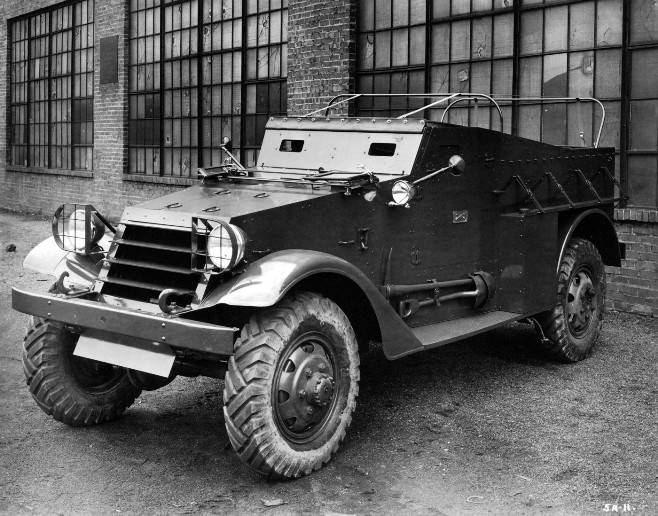
It was equipped with a Ford V8 8 85-cylinder engine with HP. and developed speeds up to 120 km / h, however, the American army was not interested. A slightly more fortunate other car, the T13, built on the chassis of a commercial Ford-Marmon-Herrington 1-ton truck: The National Guard ordered 38 units in 1937 this year.
But what about the pioneers? White Motor Company did not “fight” with competitors, but chose the way of further modernization М2А1. An interesting fact is the modernization of not only the engine, the new version received a 5-liter Hercules JXD engine with 110 horsepower, but also the body itself.
The corps, in the variant already adopted by the army, is traditionally considered inviolable. Its changes are always associated with complications when accepting a new car. However, White went to change both the hull and the look of the car.
М3 received armor plate in front of the radiator, which was located at a rational angle, which increased its bulletproofness. And the thickness of the armor was increased to 12,7 mm.
In 1938, this modernized armored personnel carrier was standardized by the US Army under the symbol M3. And again the car went to the troops in a small series. Before 1940, 64 units of this version of the machine were released. All of them went to the 13 Cavalry Regiment and the 7 Cavalry Mechanized Brigade.
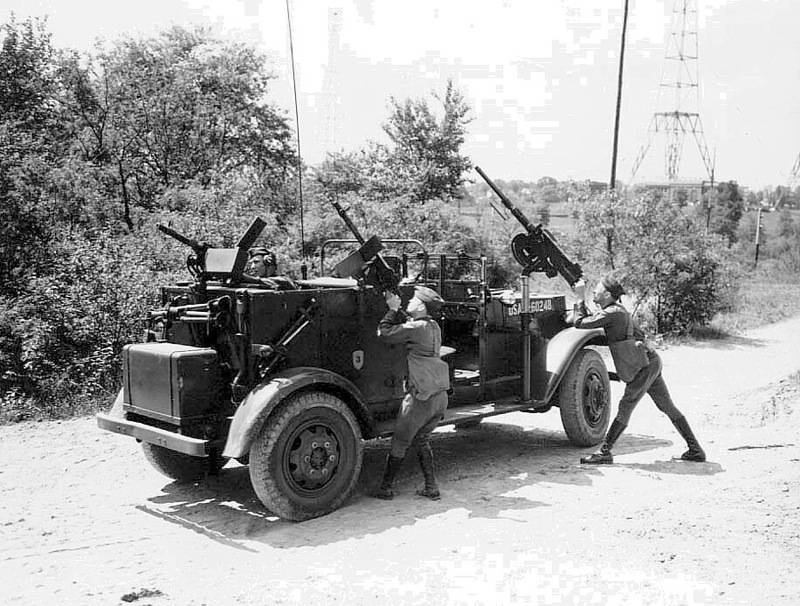
The experience of using these armored personnel carriers was generally positive. It was planned to organize the mass production of M3 for the intelligence units of the American army. However, already in 1939, the White Motor Company presents an updated version of the body. Somewhere even revolutionary.
The new machine had an elongated hull aft. The width of the body was increased, it exceeded the outer envelope of the rear wheels. The configuration of the side doors and the design of the front sheet of the body have changed, the door in its stern wall was eliminated.
In front of the hull, or rather, in front of it, a buffer rotary drum appeared, which became a characteristic detail of American armored personnel carriers of the Second World War period.
It is in this building that we know Scout. In the US Army, he received the index MXNXA3. And it was this armored personnel carrier that went into series in 1.
What is the Scout M3A1 from the point of view of design.
In terms of assembling the M3А1 chassis, it was a typical all-wheel drive (4х4) 1940-s light truck with a transfer case, which was installed separately from the gear box and was connected to it by an intermediate shaft.
The Scout had a fully armored, open-top hull, in front of which there was an engine, and behind it was a control compartment and a landing unit. Armored Corps had a different reservation. The thickness of the armor of the frontal hull of the body of the M3А1 armored personnel carrier was 12,7 mm, and all other sheets - 6,35 mm.
Sometimes there is a question about the appropriateness of an open roof on the body of an armored personnel carrier. The answer is simple: the designers refused additional doors in the aft part of the body. The doors are preserved only for the driver and commander. Thus, for the rapid evacuation of personnel, as well as loading and unloading, the roof would become an obstacle. And so - jump, and all. Or climb under the rail. Not the most convenient method, but where the headspace is a soft canvas cushion.
And the second. In firing from the side of the machine, the machine-gunners used the rail-bus, borrowed from Corbitt М2А1. Thus, the shooting was carried out over the side. In the same way, soldiers of the landing force acted, providing a circular sector of fire.
The standard armament of the M3A1 version was the large-caliber 12,7-mm machine gun М2 and the 7,62-mm machine gun М1919А4. The loaded ammunition consisted of 8 thousands of 7,62 caliber cartridges mm and 600-750 12,7 mm caliber cartridges. Boxes, equipped with machine-gun belts, were placed in two boxes, located on the sides of the body.
Machine guns were not installed stationary, but on a special system of the mobile machine M22. It was this system that allowed machine guns to move machine guns practically throughout the entire armored personnel carrier of the BTR.
By the way, on some BTR M3А1, instead of the М1919А4 machine gun, an 7,62-mm Browning М1917А1 machine gun with a water-cooled system was installed. In the variant of the Soviet army, the machine gun Maxim was also installed there. But this is the exception rather than the rule.
To increase the reliability of the undercarriage, wheels with reinforced multilayer tires with anti-bullet filler were used. The Scout had a very high speed on the road (up to 90 km / h), but limited mobility on rough terrain and could not ensure the proper mobility of the motorized infantry.
Riding on the gas tank ... Well, there is something in it, right?
Today it sounds strange, but it was the limited mobility over rough terrain that made the Scouts not very welcome in the American army. But, on the other hand, their versatility amazed.
The armored personnel carriers performed not only the functions of reconnaissance vehicles, but also tractors, freely moving 37-mm anti-tank guns, ambulances, carrying lightly wounded or 2 lightly wounded, staff vehicles and artillery observers on one 3 flight.
Since 1942, the Scouts have become the standard armament of armored cavalry squadrons of tank and then infantry divisions of the US Army. Since March, 1943 has had 13 armored personnel carriers in each armored cavalry platoon: three in the command group (these vehicles were simultaneously 37-mm anti-tank guns), one in the reconnaissance group and nine “scouts” in three reconnaissance sections.
Scout М3А1 is widely known not only in European theaters, but also in Canada and Australia. The United States supplied armored personnel carriers to the Canadian and Australian armies, the troops of the Free French, the Polish, Belgian and Czechoslovak armies. And of course the USSR.
The first М3А1 were Canadian and Australian units; the British army accepted them only in May 1941. Used M3A1 in the headquarters units of the regiments and brigades. Soon they began to be used as ambulances and artillery observers.
In the tank and armored car parts "Scouts" for quite a long time served as commander and communication vehicles equipped with a powerful radio station. However, soon each squadron in the regiments of armored vehicles received a platoon of riflemen and four Scouts to transport them. In the second half of 1944, the Scouts in the British Army were already in almost all British motorized infantry battalions.
The fate of the Scouts, which were supplied to the USSR under a lend-lease, is interesting. The first deliveries of these machines began at the beginning of 1942. The fact is that in the documents of that period these machines did not even have a single name. You can find at least three different names for this type of technology. Armored personnel carrier, armored vehicle and semi-armored vehicle. And all this is “Scout” М3А1.
The car was so unusual that the Soviet command was forced to organize the training of crews for these armored personnel carriers in a training regiment specially created on the basis of the 20 tank regiment in Uryupinsk, and from 1 in March 1942 in Ryazan. In parallel, in the 3-m Saratov School of armored vehicles and armored personnel carriers trained technical personnel and retrained officers and non-commissioned officers to command the units of these armored personnel carriers.
"Scouts" have become the most massive and most popular armored personnel carriers in the Red Army. They were used in the same way as in the Allied forces, mainly as reconnaissance and staff vehicles. The reconnaissance of a tank or mechanized brigade had 3-4 М3А1, a corps reconnaissance battalion - 6-8, and an army motorcycle regiment - 13-16.
Cars were really loved by soldiers and officers. And for an example of the combat use of this BTR, let's take a description of the actions of the reconnaissance company of the 28 Guards Mechanized Brigade of the 8 Guards Tank Corps during the liberation of Poland in August 1944.
Left to the left two divisions of intelligence under the command of Lieutenant Alekseychuk riveted the attention of the ambush of the enemy. Meanwhile, four armored personnel carriers М3А1 of a separate reconnaissance company under the command of the deputy chief of staff of the intelligence brigade of the guard, Major Tifonov, opened heavy squatting automatic-machine-gun fire at the enemy.
As a result, the Nazis 30, seeing the hopeless situation, abandoned weapon and surrendered, the rest, who was in the gully (before 60 soldiers and officers), was destroyed. Only individual Nazis up to 30 people, entrenched in the building, continued to conduct strong automatic and machine-gun fire, shooting through the road on which the column of vehicles had to move.
The two M3А1 armored personnel carriers sent forward, under the command of Senior Sergeant Starostin and Sergeant Lieberman, approached the factory building and opened hurricane fire on the windows, forcing the enemy to stop resistance. The two anti-tank guns of the 2 motorized rifle battalion, which came to the rescue, completed the ambush of the enemy. "
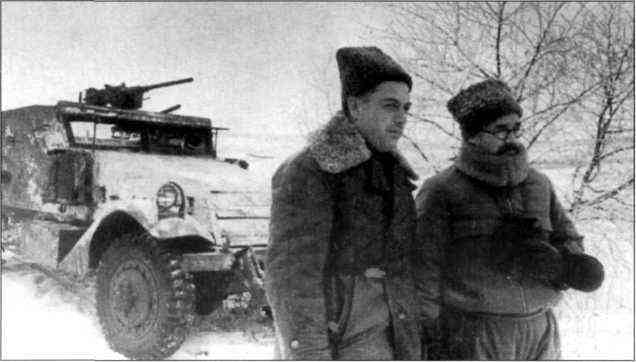
Thick cavalry mustache and professorial glasses. That's right, Colonel-General Pavel Alekseevich Rotmistrov. And behind him is a Scout.
Scout М3А1 was produced before 1944 of the year. A total of 20 994 armored personnel carrier descended from the conveyors of the plant. Of these, 3 034 machines were supplied to the USSR.
And the traditional technical data of the hero of the material:
Combat weight BTR, t: 5,62
Crew, people: 1-2
Landing, people: 5-7
Overall dimensions (LBH), mm: 5626 x 2032 x 1994
Base mm: 3327
Track, mm: 1657
Ground clearance mm: 400
Reservation
Steel armor, surface hardened
Body forehead, mm: 12,7
Board, mm: 6,35
weaponry
Machine gun 12,7-mm М2НВ - 1 (b / c to 700 cartridges);
Machine gun 7,62-mm М1919А4 - 2 (b / c to 8000 cartridges).
Engine
Inline, 6-cylinder, carburetor, liquid cooling, Hercules JXD
Power, hp: 110
Speed (highway), km / h: 91
Cruising (highway) km: 400
Overcomes barriers:
rise, hail: 30
wall, m: 0,3
ford, m: 0,7
But on this material is impossible to finish. Just because there was one important question for our military equipment. Whose "father" "Scout" М3А1? This statement at the beginning of the article requires proof.
Soviet designers during the war dealt with many problems. Alas, the priority armored personnel carriers were not listed. American and British cars successfully filled this flaw. Yes, and production facilities were engaged in the release of other types of weapons and equipment, for example, tanks and self-propelled guns, more useful at that current time.
The USSR simply did not even have such trucks that could become the basis for the development of an armored personnel carrier. Only in 1944, the tests of the Soviet GAZ-63 began.
A characteristic feature of this car were wide tires 9,75-18 and lean-to the rear wheels, which had the same track as the front. When driving through mud, snow, sand, all the wheels went “next to the next” without experiencing additional rolling resistance due to the difference in track width.
On state tests of all-wheel drive vehicles GAZ-63 demonstrated, as noted in the report of the Main Automobile and Tractor Office of the Red Army, "record-breaking throughput".
At the beginning of 1947, in the OKB of the Gorky Automobile Plant, headed by V.A. Dedkov, the design of a light two-axle 141 object, designed to carry eight infantry, the Scout, began in a Soviet way. V.K. was appointed lead designer. Scar. GAZ-63 chassis was used for this car, reducing the base by mm 600 and increasing the engine power by hp 10.
Several armored personnel carriers were designed and built, but only in 1949 the armored personnel carrier successfully passed state tests and was adopted by the Soviet Army under the designation BTR-40.
At the end of 1950, the mass production of the car began at the Gorky Molotov Automobile Plant, and its creators were awarded the Stalin Prize. The armored corps was manufactured by the Murom steam engine repair plant.
It was this Soviet descendant of the American "Scout" that many saw in parades and in museums ...
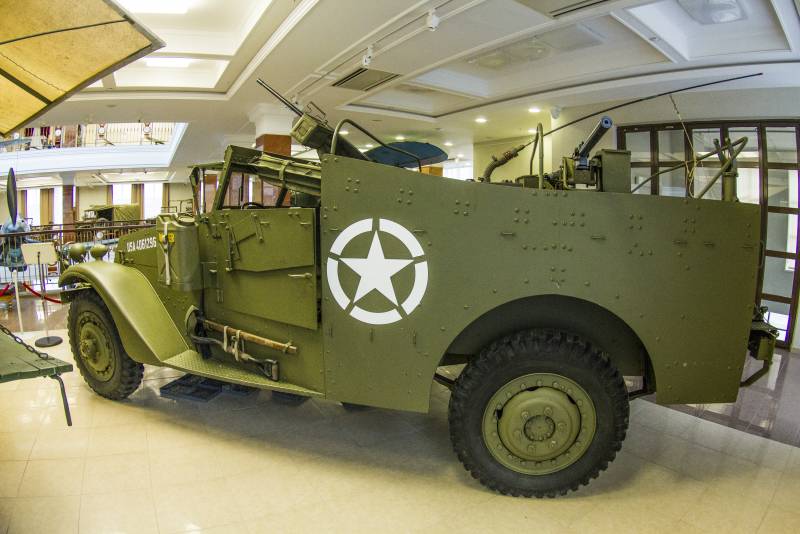
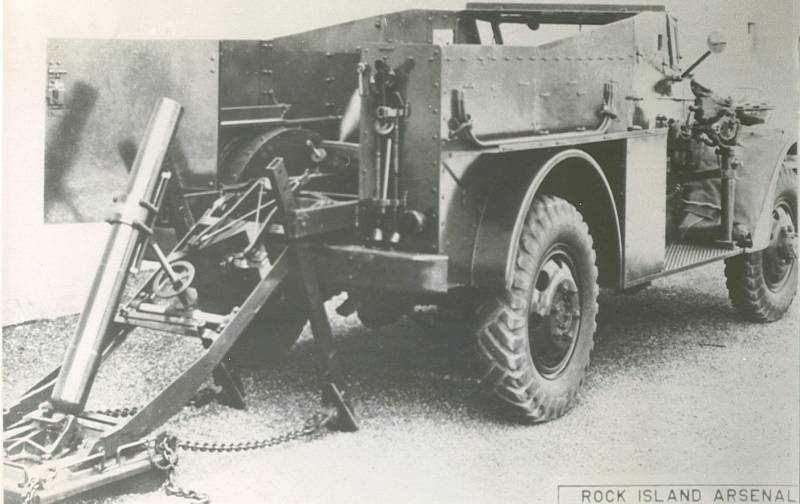
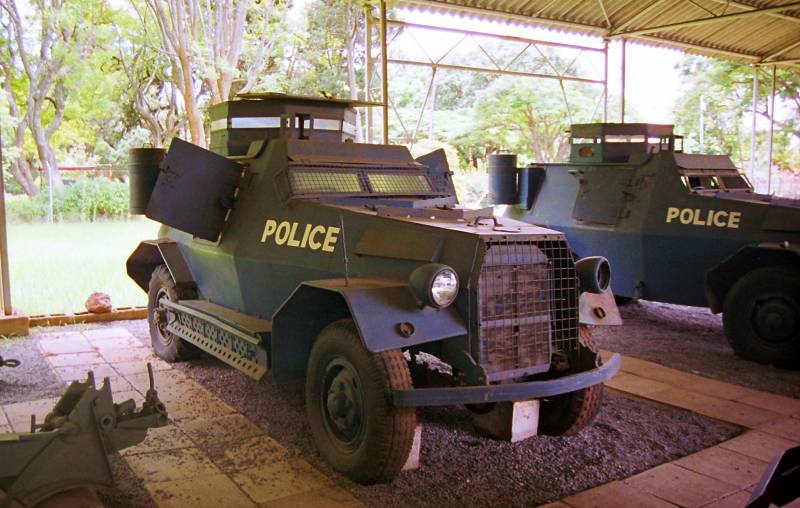
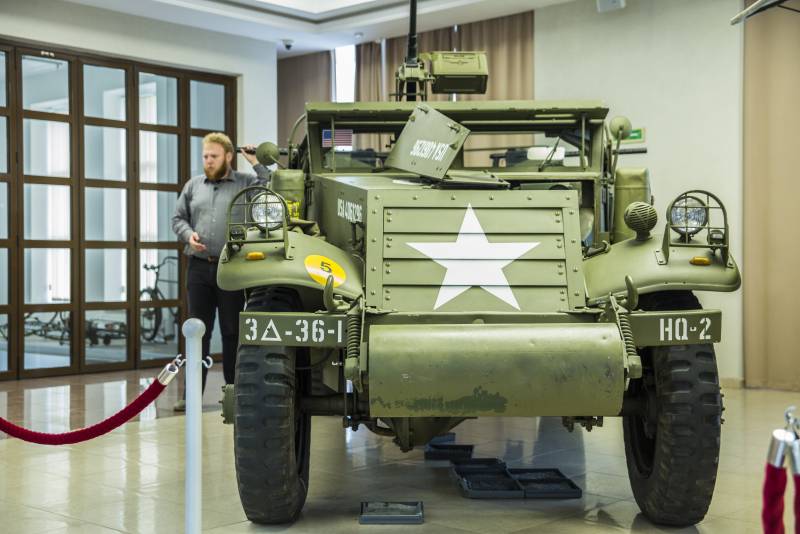
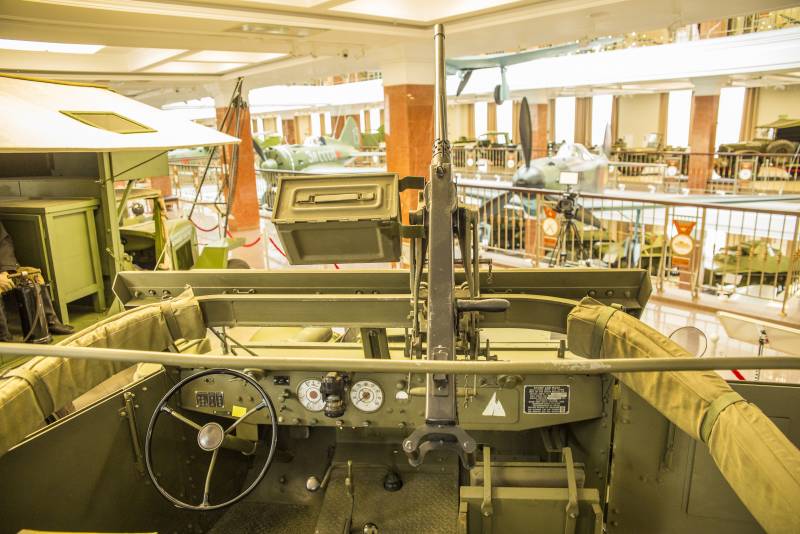
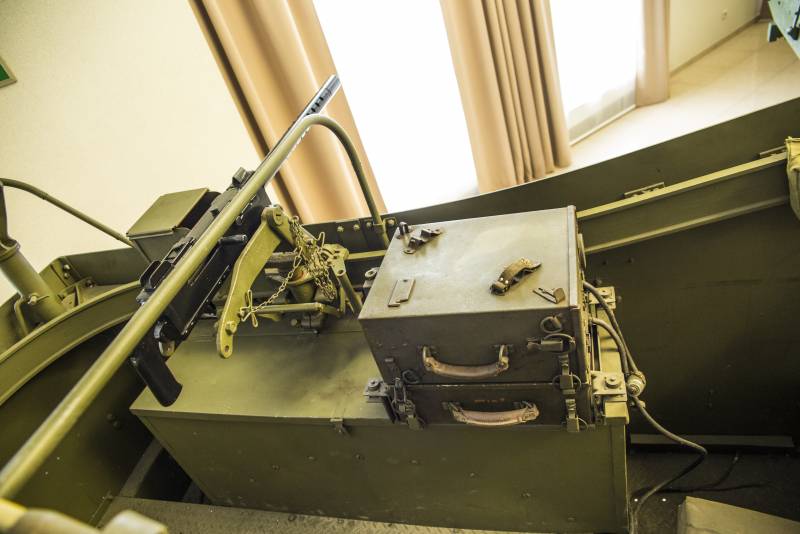
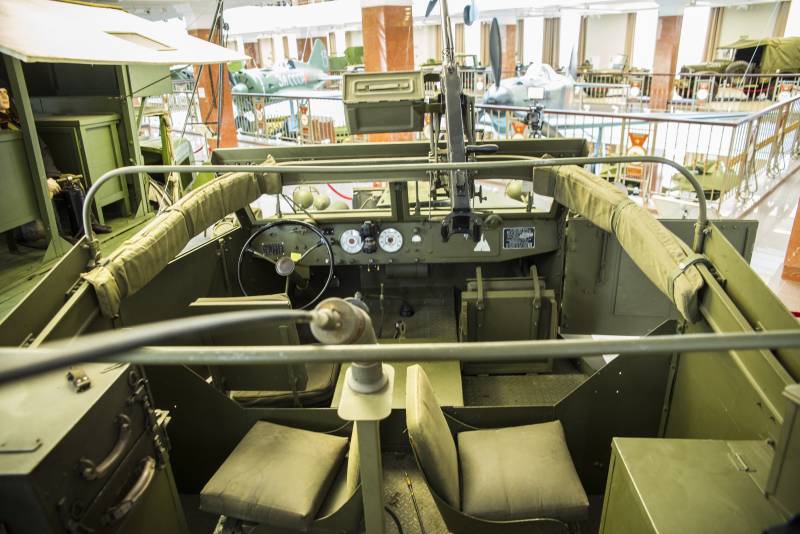
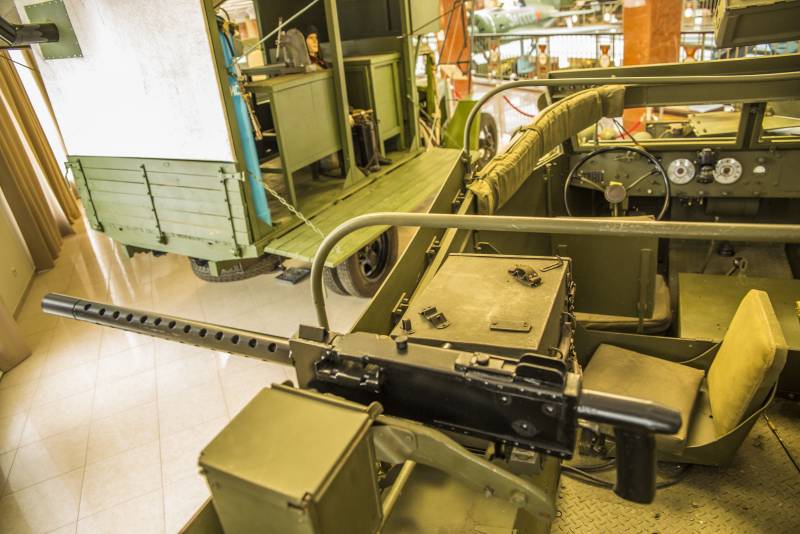
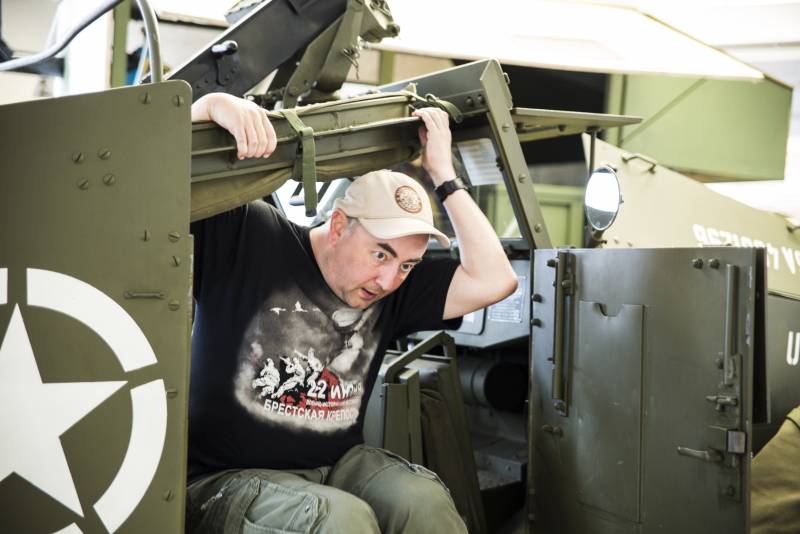
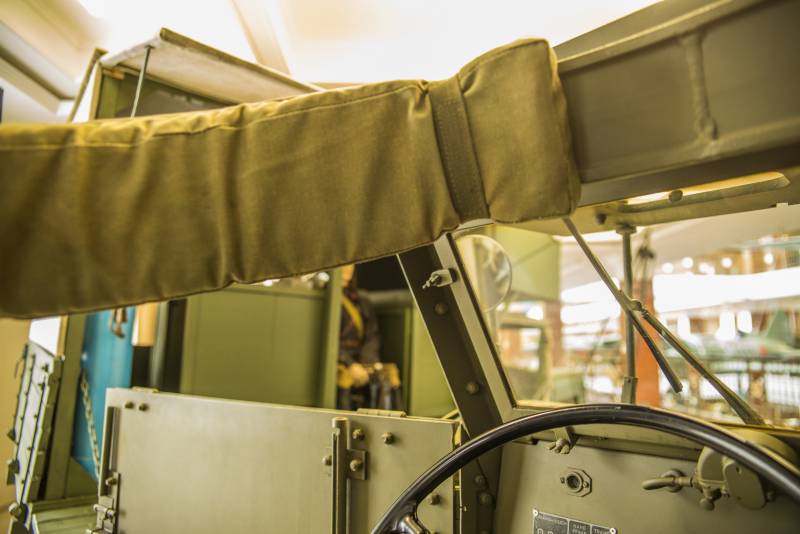
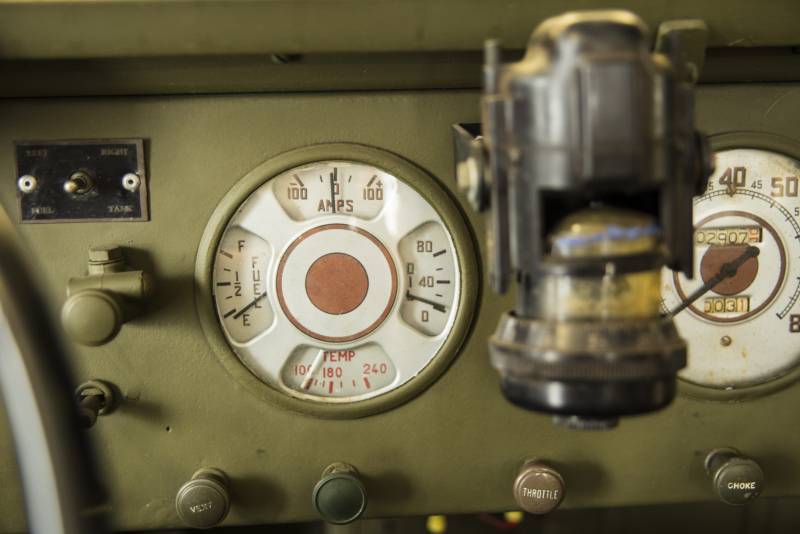
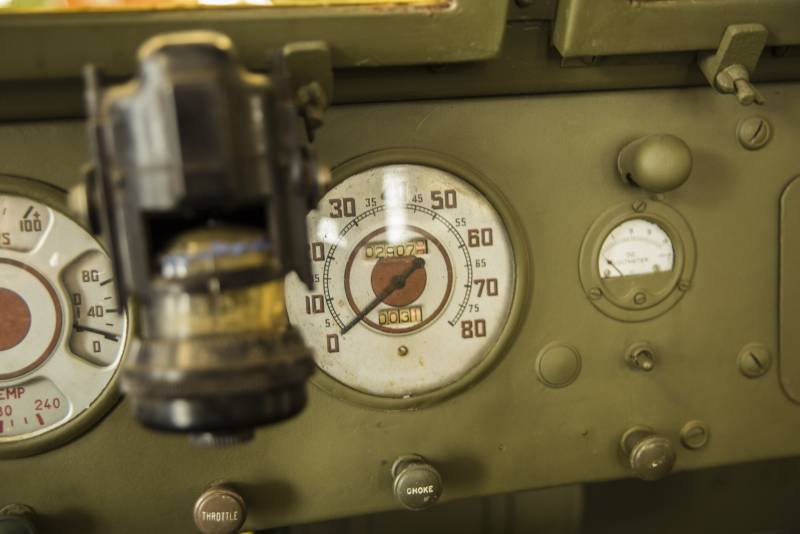
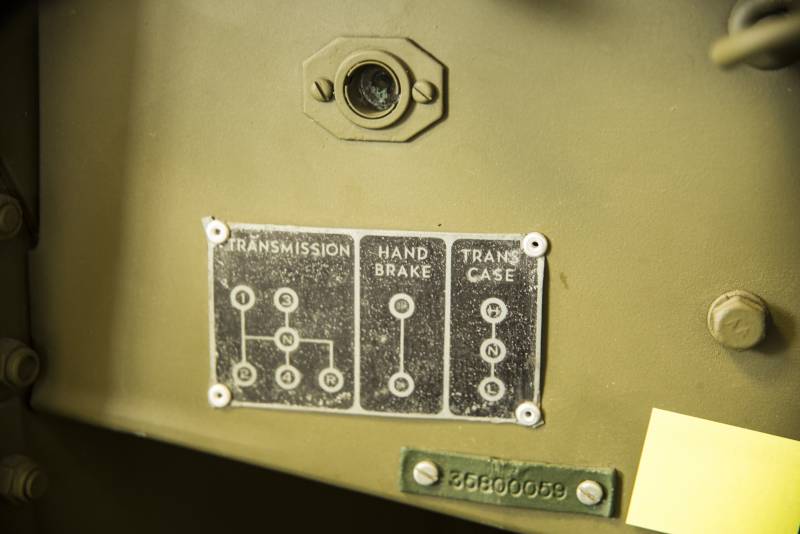
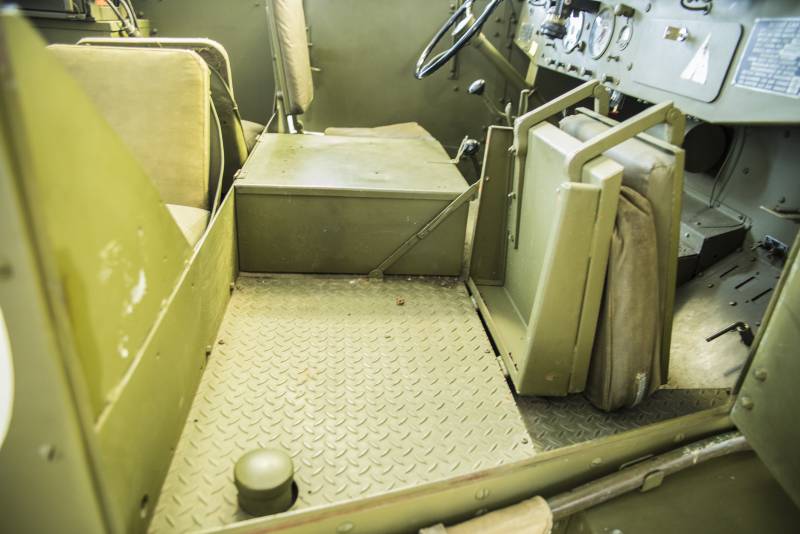
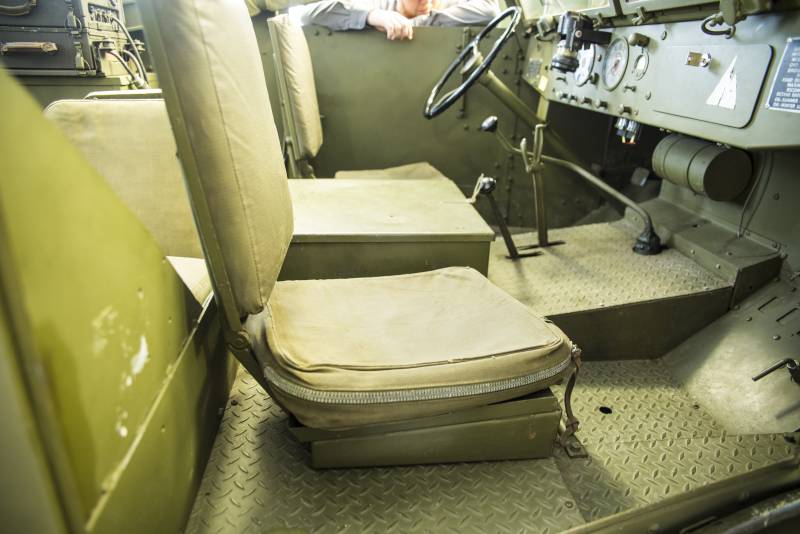
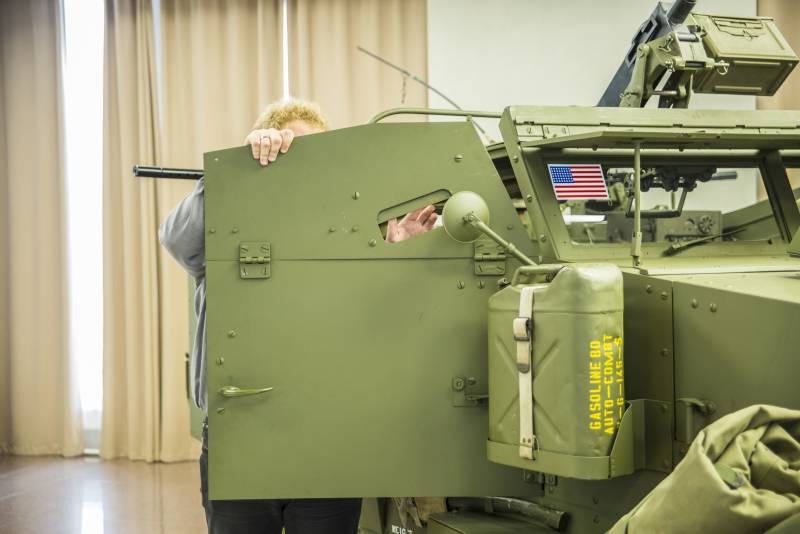
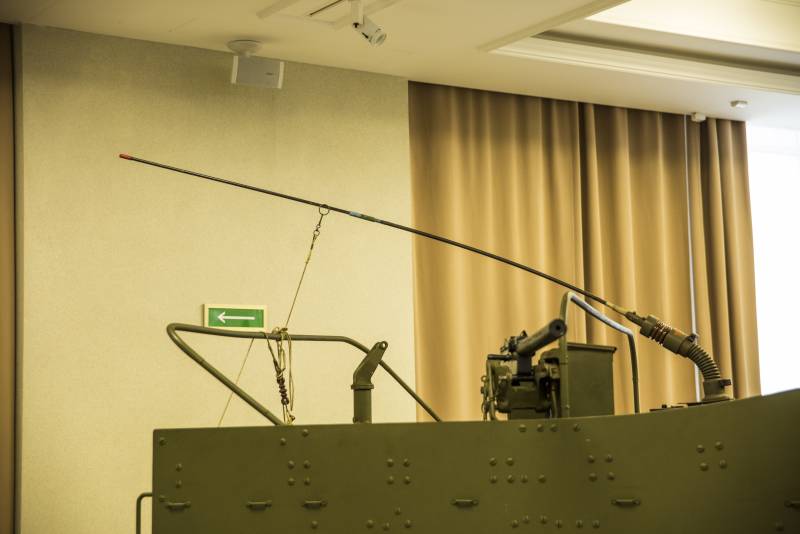
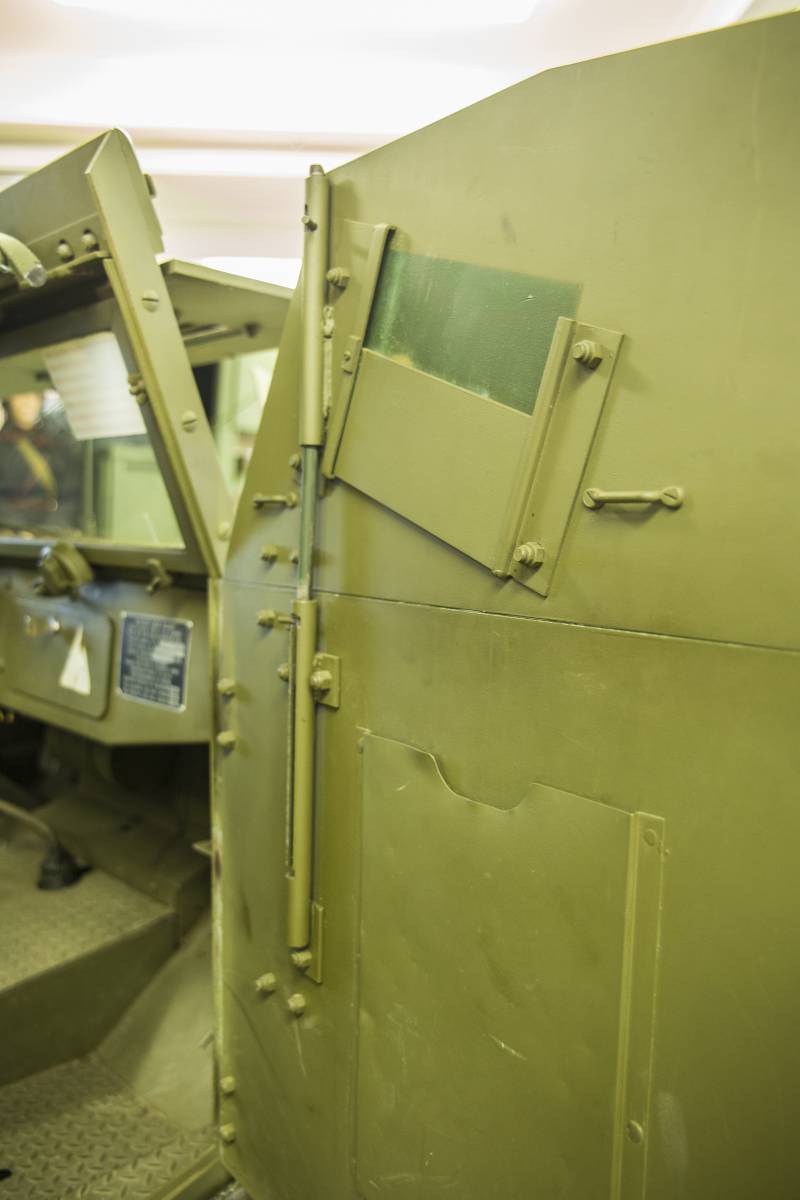
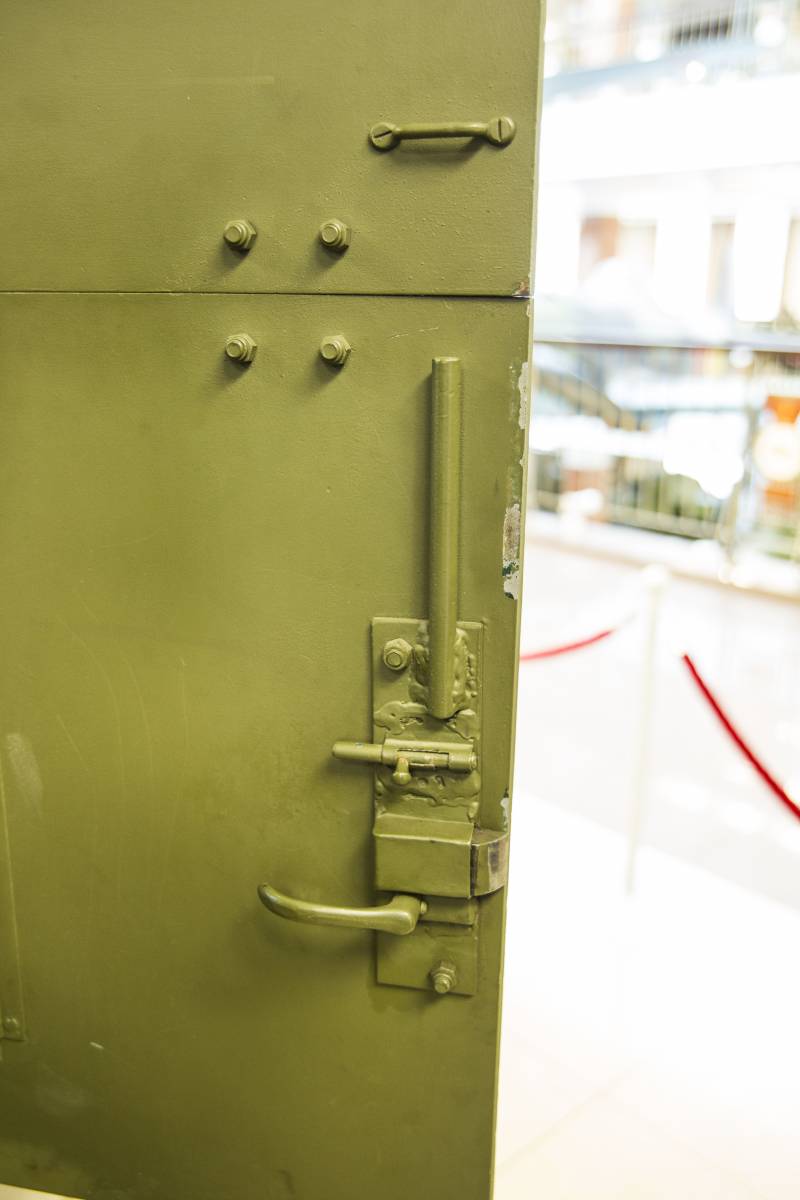
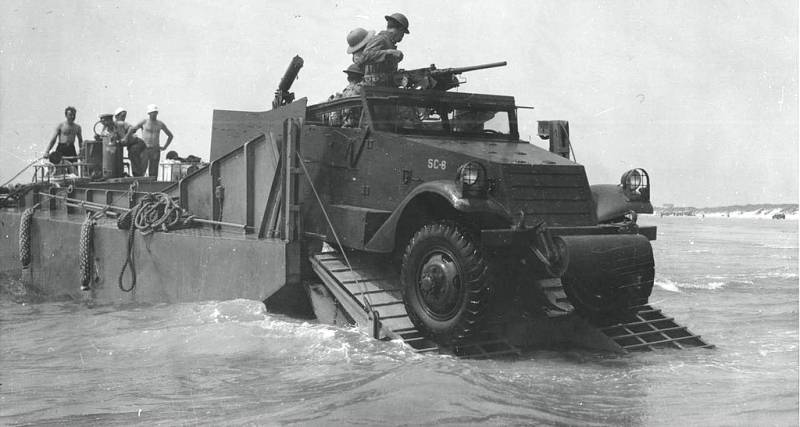

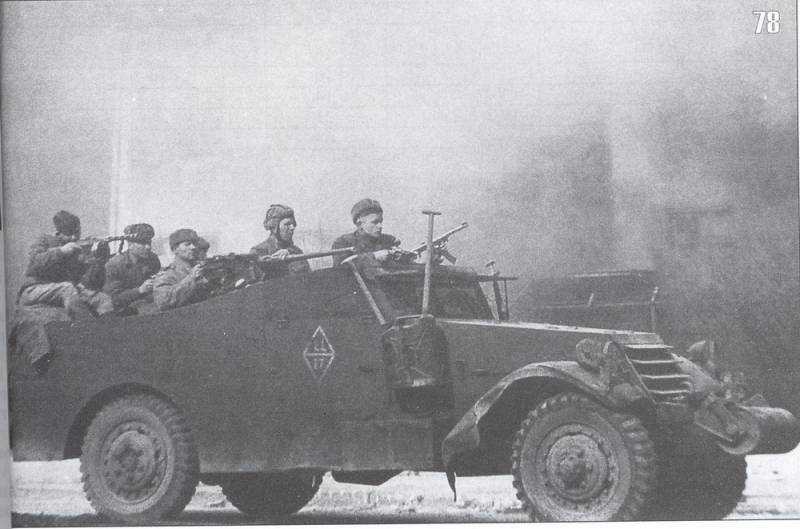
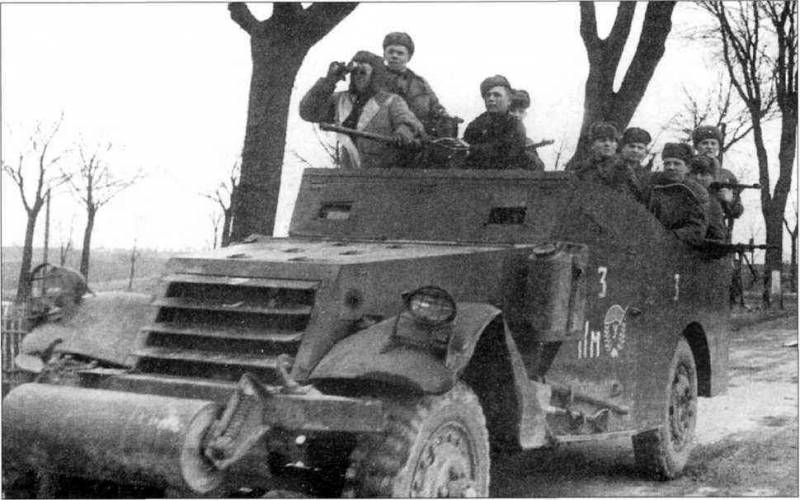
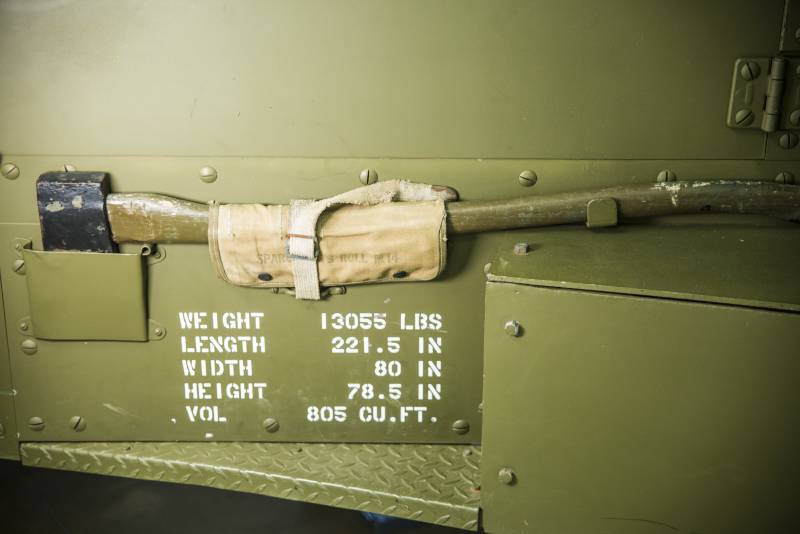
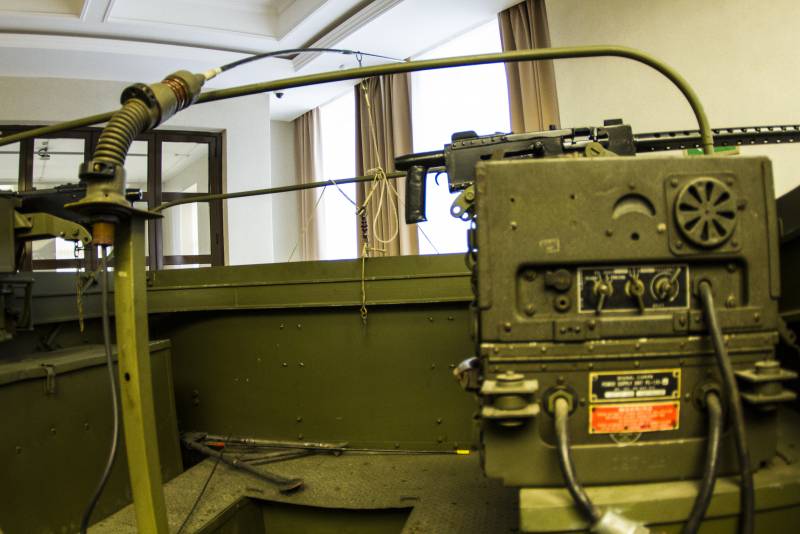
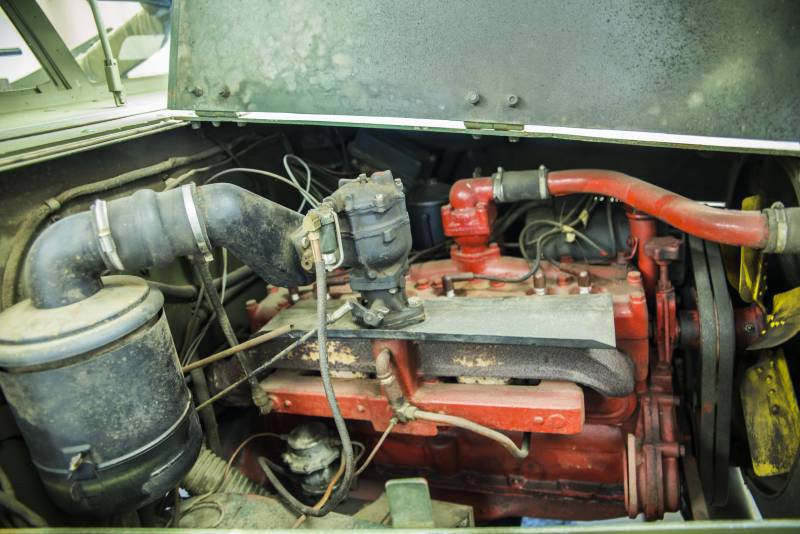
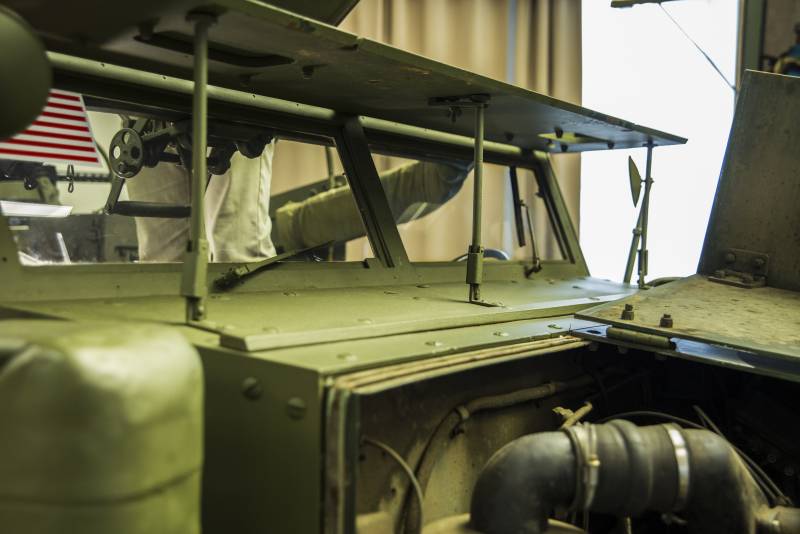
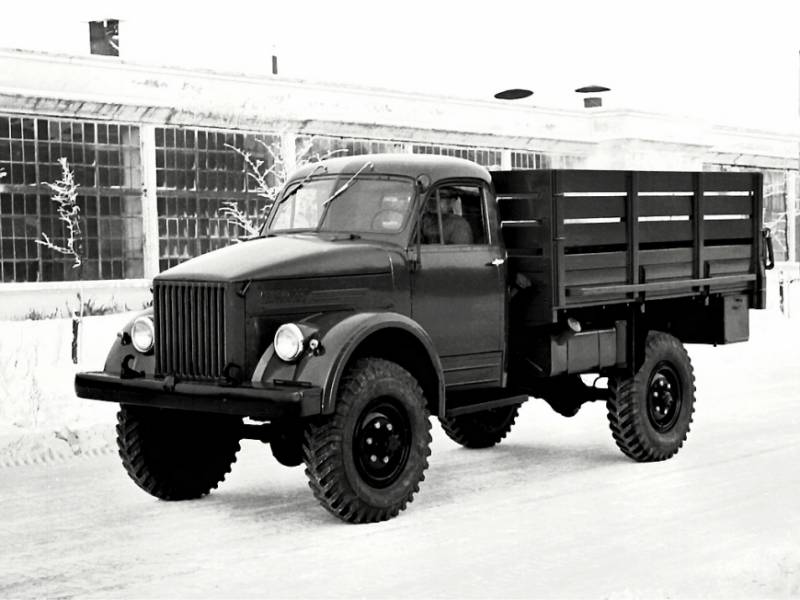
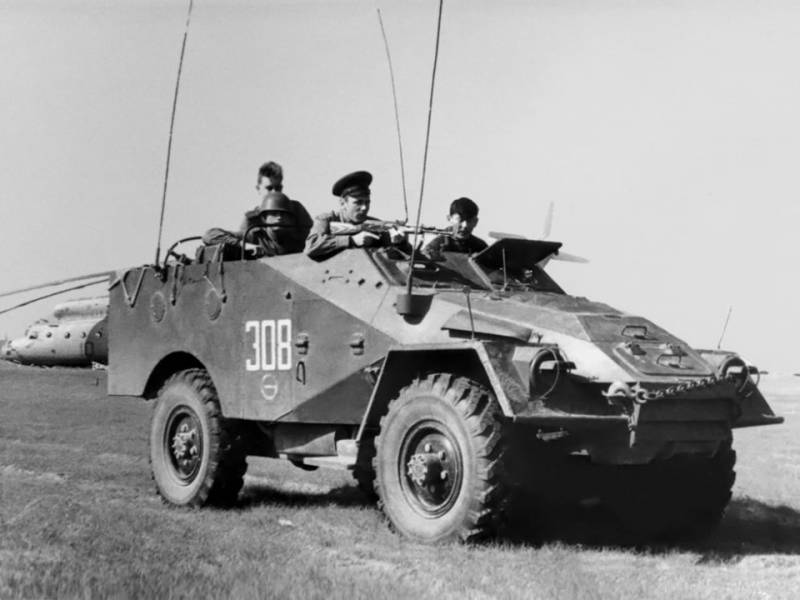
Information